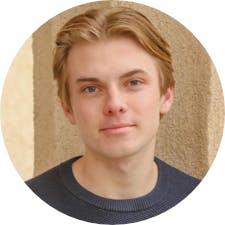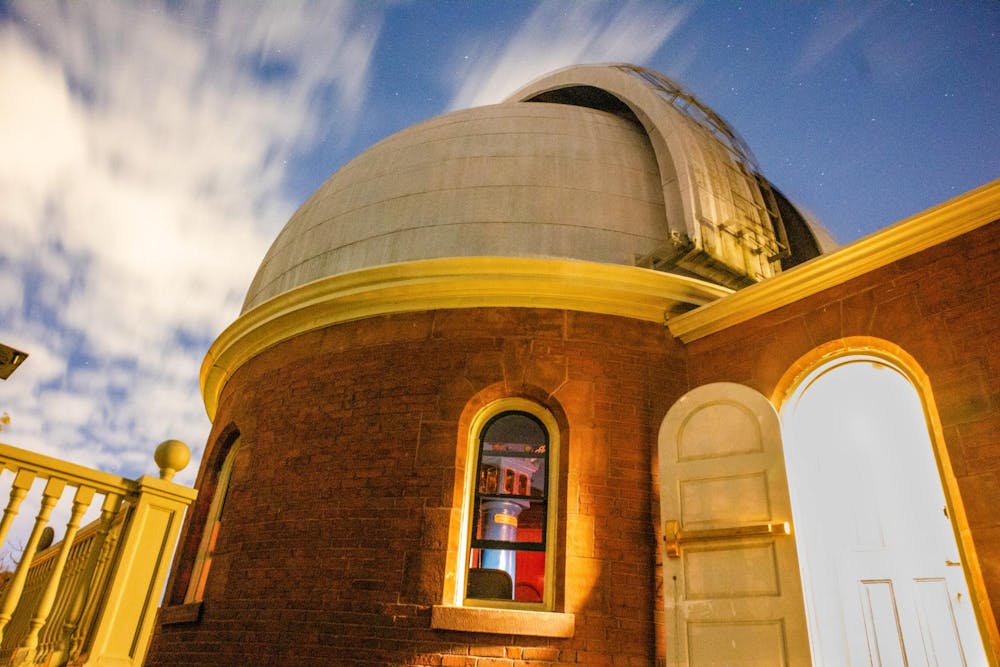Just north of campus, in the University-operated Ladd Observatory, members of the public gathered in a Victorian-style house on a clear Tuesday night to peer through a 19th-century telescope at the cosmos above. Brown student workers were available at the observatory, guiding visitors as they gained firsthand glimpses of the moon, Saturn and Jupiter.
This week, The Herald joined community members to look up at the stars.
“When I was about 5 years old, I went to an observatory in my hometown and I saw Saturn through a telescope, and I thought it was fake,” Finnegan Keller ’25, one of the student telescope operators, said at the event.
Years later, when Finnegan visited Ladd the summer before his first year at University, he recalled being able to imagine himself working at the observatory. One year later, as a first-year Brown student, Finnegan applied and was hired as a student observatory assistant, a position he still occupies today.
“It feels really great to be able to be here and share that wonder with people of all ages,” Keller said as visitors wandered around the observatory’s upper terrace.
Kieran Naseem was one such local visitor. While he has no formal education in astronomy, Naseem has visited several other local observatories and attended a viewing of the full moon last Saturday at Blackstone Park.
He found his way to Ladd after hearing a “little whisper about some lunar activity” and deciding he wanted to explore further.
The observatory has been “open to the public on a weekly basis since 1891,” according to Brown’s 250th Anniversary website. Over the past two centuries, community members have been able to attend lectures, workshops, telescope viewings and more.
According to Brown’s Manager of Astronomical Laboratories Robert Horton, to calibrate timepieces within the observatory, Ladd’s scientists once measured “Earth's rotation as a master clock.” These measurements were also distributed “via telegraph wires to a variety of customers that would want to know what the accurate time was,” Horton said.
After the COVID-19 pandemic hit, Horton said he identified a need to “revamp” the observatory’s public nights and increase student involvement.
“I thought it would be really good for the students to have a more involved experience rather than just being assistants,” he said. “They were trained to operate the telescope and speak to people about their experience at Brown.”
According to Horton, the Brown Astronomy Club, which has a substantial membership overlap with Labb’s student operators, now boasts over 150 members. Beyond their involvement with the observatory, they have also begun to organize trips to more remote observatories that are exposed to less light pollution to study dimmer objects such as “nebulae and star clusters and galaxies,” Horton said.
The University’s Physics department, which oversees the observatory, has also started the Clear Skies Magazine, a monthly astronomy publication with student and staff writers with a circulation of over 2,000 subscribers, Horton said.
According to Horton, the Ladd Observatory also hosts undergraduate astronomy classes and special events during eclipses or meteor showers.
“Ladd is really a special part of the astrophysics experience,” Keller said.
“We're trying to drive a real passion for just looking up and seeing what's out there,” Horton said. “We want people to learn their place in the universe.”

Owen Dahlkamp is the managing editor of newsroom on The Herald's 135th Editorial Board, overseeing the paper's news operations. Hailing from San Diego, CA, he is concentrating in Political Science and Cognitive Neuroscience with an interest in data analytics. In his free time, you can find him making spreadsheets at Coffee Exchange.





